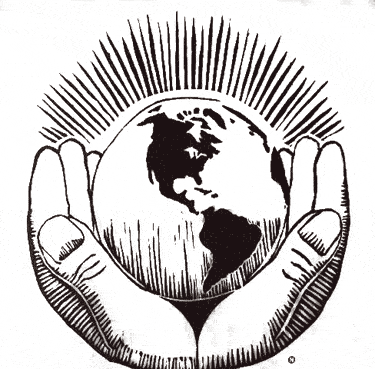by Marion Banzhaf
What can feminists expect, or demand, from foundations in the coming years?
Foundations lost approximately 30 percent of their assets in 2008, according to the Chronicle of Philanthropy, and the bottom is probably not yet here. Competition is going to be fiercer than ever, and the demand for essential services will increase so dramatically that the small amounts of policy, advocacy and movement-building funding might disappear altogether.
As a result, feminist projects will need to become even more creative in fundraising, especially if they are to seek fundamental changes in society or tackle disempowerment and unequal access to resources.
Foundation Assets and Social Benefits
At their heart, most foundations are not committed to revolutionary change in the best of circumstances. Many foundations (and faith-based organizations) do positive work for society, but often within tight limitations and guidelines that are not likely to rock traditional boats.

Foundations were first designed in the early 1900s, and served to pacify discontent with inequality by addressing the needs of the most poor. They supported service-oriented work and relieved the government from providing essential needs. They have been a key way for the very rich to get tax breaks for holding on to their money forever, while looking beneficent. A new super-rich class was developed from the enormous profits reaped from railroads, oil, steel and other industries during the robber baron age from roughly the 1890s-1920s, and the wealthy built ostentatious demonstrations of their rapidly accumulated wealth, much like today’s McMansions and the new “Richistan” population created from the 1990s electronic and stock boom.
To retain their tax-exempt status, foundations are restricted in lobbying, may not support individual candidates for office and are required to spend five percent of their assets every year. A foundation with $1 million in assets only needs to spend $50,000 in any year. Note that this number includes salaries and all other administrative costs, as well as grant allocations. Some critics of philanthropy point out that the removal of assets from the stream of taxation costs society more than what is received in grant dollars.
The Foundation Center reports that there are 72,000 grantmaking foundations in the United States. Most of these are independent foundations, and more than three-fifths of them were founded after 1989, reflecting the explosion of new wealth at the end of the 20th century. According to a recent study, U.S. foundations made grants of $42.9 billion in 2007, compared to $16 billion in 1997.
The non-profit sector is a substantial part of the economy, and “non-profit industrial complex” broadly describes the economic system of community organizations, churches and foundations. A recent study funded by the Philanthropic Collaborative documents that the $42.9 billion allocated in grants generated $368 billion in direct social and economic benefits.
Putting Dollars Into Change
The right-wing has understood the need for ideological funding: for the last 50 years, it’s spawned lots of think tanks, publications, conferences, political training programs and the like. The Heritage Foundation’s new media training center in D.C. has dedicated its top floors to dormitories so all the young fundamentalists can both get training and build deep bonds with each other, forming ties that could cement their alliances for life. These right-wing groups are working to change societal beliefs and to promote their politics — traditional family values, free market capitalism and privatization of the commons, including water and utilities, for corporate profit.

Progressive foundations haven’t had the same intentions or resources for ideological funding until recently, and rarely devoted funds to big-picture thinking or fostering fundamental change. When they do fund these areas, the amounts of grant dollars are much smaller than what right-wing interests have allocated for decades.
The Funding Exchange, a national network of 15 left-leaning public foundations in the U.S. that support social justice efforts, coined the term “change not charity” to distinguish grantmaking with distinct social change goals from philanthropy focused only on serving the poor, rather than developing strategies to eliminate poverty.
The best foundations working for change recognize that the people most affected by a problem are the most valuable people to develop solutions. The foundations provide general operating support and they allow for fiscal sponsorships so that not every project has to become a non-profit corporation. Foundation dollars spent for building the capacity of grassroots groups without requiring traditional structures are rare, but prized, because they put fewer constraints on organizing.
Critics of the non-profit industrial complex, such as authors in the anthology The Revolution Will Not Be Funded, cite the conservatizing impact of foundation dollars and make compelling arguments for seeking foundation funds with eyes wide open. But all foundations are not necessarily the same, and they remain important institutions to be accessed.
Women’s Funds Try to Bulk Up
Some significant resources have developed. The Women’s Funding Network(WFN), headquartered in San Francisco, is comprised of 135 organizations around the world, with combined assets of $750 million (before 2008). In 2007, the members of the Women’s Funding Network allocated $50 million in grants globally. Women’s Funds exist all over the United States, and although funds can collaborate, each foundation is autonomous, recruiting its own donors and setting its own guidelines for funding. Many of these funds are restricted to local programming and they have mixed approaches to supporting more politically oriented projects.
The Women’s Funding Network is engaged in a big push to expand its donor base and its reach to the public. Joining with Swanee Hunt and Helen LaKelly Hunt (of the Hunt oil family), the Women Moving Millions campaign was launched with the goal of raising $150 million, which would bring the WFN’s assets to $1 billion. In 2006, Swanee and Helen launched the campaign with a gift of $10 million, and are working to recruit other million-dollar donors. In 2007, Women Moving Millions had raised half of its goal.
But the WFN believes that “everyone can be a philanthropist,” and each member foundation is involved in organizing grassroots fundraising from garage sales to potlucks and house parties. It has joined with the Good Deed Foundation to receive a portion of sales of various consumer goods such as energy-saving light bulbs.
Progressive philanthropy has been working to tackle racism, sexism, heterosexism and classism by funding more radical grassroots groups, as well as cleaning their own houses.
For thirty years, the Astraea Lesbian Foundation for Justice has been a pioneer in prioritizing funding of people of color organizations and individual cultural workers, such as writers and artists. For the last 12 years, it has been the primary funder of LGBTQ groups internationally, supporting emerging lesbian and LGBTQ groups in China, Nepal, throughout Central and South America, and in Africa, including the Coalition of African Lesbians. It accepts proposals in languages other than English, and determines funding allocations with the input of community activists.
The work of Funders for Lesbian & Gay Issues is an example of bold advocacy within the philanthropic world to raise tough questions about allocating resources, and institutionalizing racial, economic, gender and gender-identity equity within philanthropy. The group documented that LGBTQ groups received $227 million from 2002-2006, which represents only one-tenth of one percent of all foundation funding. Groups led by people of color only received 8.8 percent of all LGBTQ grant monies, although strong and independent (or autonomous) people of color groups, such as the Audre Lorde Project in Brooklyn or the National Black Justice Coalition in Washington, D.C., are necessary to create new bases of power from which to organize.

Now, Funders for Lesbian & Gay Issues has released a new publication, “LGBTQ Grantmakers 2008 Report Card on Racial Equity,” a fascinating read. It examines how a group of 19 grantmaking foundations incorporated racial equity into their board, executive, total hiring and grants allocation. These groups have committed to continuing both dialogue and action to make real, not cosmetic, racial justice changes in LGBTQ grantmaking.
Shifting Thinking about Funding
As foundation funding shrinks, it will be important to change how we think about the very roots of funding to make a difference to the future of social justice.
Fundraisers in the nonprofit sector often focus on the wealthy, or the perceived wealthy, for revenue support, even though most of the donations generated still come from individuals of modest means. In fact, people of moderate incomes are usually much more generous with their giving than the very wealthy. Giving USA reports that individuals contributed 75.6 percent of all charitable contributions in 2006, and that 78 percent of Americans donate at least once during a given year. On average, most individuals give away almost 2 percent of their income annually.
People who want to support radical organizing can foster a spirit of giving so that we all become more generous in contributing to making change. Churches ask for a tithe of ten percent of people’s income, and they get it! One of the reasons they get it, is because they ask for it, week after week. We need to become bolder in asking for support, and we need to recognize that raising money is a valuable political skill. Using the Internet and social networking sites effectively can raise lots of funds through modest individual donations.
Developing fundraising skills also requires confronting issues around class background. Doing consciousness raising around money helps to break down assumptions, stereotypes and privilege. Class Action, based in Hadley, MA, sponsors cross-class workshops and has many resources to heighten awareness of class oppression. Many people have to struggle against the trope of beggar in fundraising. Raise More Money: The Best of the Grassroots Fundraising Journal, edited by Kim Klein and Stephanie Roth, provides great resources for changing attitudes about raising funds. The editors are the gurus in applying the feminist principle of the “personal is political” to fundraising. One principle is to start with yourself, your friends and your family. When did you first become aware of money? Did you grow up in a family where giving was part of the culture? Do you already give away a portion of your income? Are you intentional about it? Do you tell other people which groups or causes you support? How do you decide?
Many of us probably give away more than we realize. But being intentional allows us to be even more generous in tough times. Rather than waiting until the end of the year to see what’s left, decide at the beginning what your giving goals are and how you want to allocate them, and arrange for monthly deductions from your checking account or credit card. Aside from being asked, people give because it feels good. Each month, you can be proud of your contributions.
Organizing for change takes time, labor, materials, thinking and support. Fundraising is political organizing, which is both individual and collective. Giving to movements working on long-term social justice provides great payback.
Marion Banzhaf directs the Sonya Staff Foundation, a small family grantmaking foundation, is on the board of Astraea Lesbian Foundation for Justice and has consulted with the Ms.Foundation for Women, among others. Prior to working in philanthropy, she was the Executive Director of the New Jersey Women and AIDS Network. Her background is in women’s health, reproductive justice and HIV/AIDS.
Also see MILK: Recruiting for Revolution, Movie Review by Eleanor Bader in this edition of On The Issues Magazine.
See Health Care ‘Reform’ is Not Enough for Women by Susan Yanow in this edition of On The Issues Magazine.
